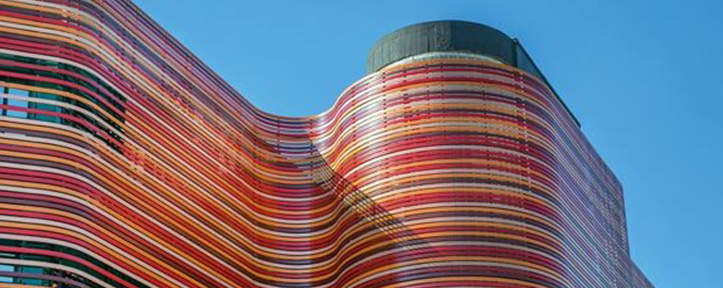Everything You Need To Know About Curtain Wall Exterior Facade Systems
In the dynamic world of architecture and construction, advancements in building design have changed how people interact with their surroundings. Curtain wall exterior facade systems, a sophisticated architectural solution that combines aesthetics, functionality, and sustainability, is one such revolutionary development. Curtain walls are non-structural cladding systems that envelop a building's exterior, offering a myriad of benefits ranging from energy efficiency to enhanced aesthetics. Below given is the comprehensive guide to shed light on the essential aspects of curtain wall systems, and the role they play in shaping the future of modern architecture.
What is a Curtain Wall Exterior Facade System?
The curtain wall is a lightweight and non-load bearing building envelope solution typically made of glass, metal, or composite materials. It is important to note that curtain walls are different from traditional walls in that they are designed to withstand external forces such as wind and gravity while providing weather-proofing and thermal insulation. This system efficiently separates the interior from the exterior environment while permitting ample natural light to penetrate the building.
Types of Curtain Wall Systems
● Stick-built Curtain Walls
This is the traditional method of assembling components on-site piece by piece. It offers flexibility during construction but may require longer installation times. The majority of these systems are installed in small areas or low-rise buildings. The reason is that it is essential to have exterior access in order to reach higher elevations.
● Unitized Curtain Walls
Factory-assembled units that are transported to the site for quick installation. This method reduces construction time and enhances quality control. A building's floor-to-floor height determines the size of the unitized curtain walls.
Design and Construction Principles
1. Material Selection
Curtain walls can be made from a variety of materials, including glass, aluminium, steel, and composites. Various factors, such as energy efficiency, aesthetics, and cost, are affected by the properties of each material.
2. Glazing Options
Various types of glazing are available, including single, double, and triple glazing with varying coatings to improve solar control, sound insulation, and thermal performance.
3. Structural Integrity
Curtain walls must be engineered to withstand wind loads, seismic forces, and thermal expansion
4. Water Management
Maintaining the integrity of a building requires proper drainage and waterproofing systems.
Advantages of Curtain Wall Facade Systems
● Energy Efficiency
Curtain walls with advanced glazing can significantly reduce a building's energy consumption by optimising natural lighting and providing better insulation. They are also renowned for being strong and long-lasting, much like zinc wall cladding.
● Daylighting
Ample natural light enhances occupants' well-being, reduces artificial lighting needs, and creates a pleasant interior environment.
● Aesthetic Appeal
Curtain walls offer sleek and modern aesthetics, providing architects with design flexibility to create striking facades.
● Versatility
They can be tailored to suit various building types and shapes, offering endless design possibilities.
● Sustainability
Through energy efficiency and the potential for incorporating renewable materials, curtain walls contribute to sustainable building practices.
As technology advances, we can expect curtain wall systems to evolve further, setting new standards for architectural excellence and shaping the skylines of the future. It is important to get the help of the best facade experts and roofing sheet manufacturers , if you wish to obtain good quality facades.



